
 Felicia Rateliff and Brian Pitts report on the technology a Texas school district is using to solve ELL reading barrier Issues
Felicia Rateliff and Brian Pitts report on the technology a Texas school district is using to solve ELL reading barrier Issues
If you were to step into a theater halfway through a performance of Shakespeare’s Taming of the Shrew, would you be able to understand the plotline? Would it be harder for you to understand it if you weren’t familiar with the use of Early Modern English language?
You might be able to deduce what was going on thanks to character interaction and contextual clues in the play. But imagine having a Shakespearean work set down in front of you and being told to explain what was happening inside its pages. Without watching the characters interact or having prior knowledge of the language, you would probably experience some confusion.
When an English language learner (ELL) enters a classroom where English is the native language, he or she is usually instructed to learn the language through the use of literary works. But how can a student whose first language is not English learn and read without the context or tools to assist understanding?
Reading comprehension and technology
To ensure ELLs can learn to the best of their abilities, their learning facility must provide them with the tools and resources to do so. Recall the situation with the Shakespearean writing above. English language learners cannot be expected to pick up a book and learn a foreign or unfamiliar language by reading said book in said language.
The issue of providing effective learning resources to ELL students is front and center at Longview Texas Independent School District (LISD) in Longview, Texas, where the student population contains a high concentration of students whose native language is not English. According to a report from the California Dropout Research Project at the University of California–Santa Barbara, EL students are about two times more likely to drop out of school than native and fluent English speakers.
“The dropout risk is high among EL students not only because they are learning English but also because they are significantly more likely than the general population to be disadvantaged racial or ethnic minorities, poor, and born to immigrant parents, each a status group at heightened risk of dropping out,” the report notes.
In light of these factors, LISD categorizes ELL students as at risk. LISD’s educational philosophy (w3.lisd.org/bilingual-esl/research-resources-trainings/index.html) is that ethnic diversity has nothing to do with learning, as ethnicity has no effect on how people think. However, when students or individuals are culturally and linguistically diverse and are taught in languages that are not their native speech, the learning outcome can be a challenge. When this occurs, the language barrier can impact the effectiveness of educators’ communication with the students.
In addition to the high dropout rate and communication barriers, a major problem ELL students face is that so much of learning is related to reading comprehension skills. According to the Association for Supervision and Curriculum Development (ASCD), comprehension is the goal of reading, but it can be the most difficult skill to master, especially for ELLs. When a student whose native language is English doesn’t comprehend what she reading, she can come back to the same information and read it again later, further trying to understand context and meaning. A non-native speaker of English is at a disadvantage. Even if an ELL student returns to a passage later, she still may not know what the passage means unless she has resources to help put the reading into context, such as visual cues or interpretation. This is where technology can help, and Longview ISD created an ELL student program to do just that.
Understanding ELL technology needs
For LISD, adding a technology program helped level the playing field between ELL students and English-speaking students. As the ELL population began to grow, the district leaders realized they needed to come up with a solution for students and their families that integrated technology for ELL education. They also knew that technology itself would not even the playing field. Instead, they needed a solution that would put the right tools together to create a full plan of action to help their many ELL students.
The plan—later named the Newcomer Program—took an innovative approach to creating resources that allow ELL students to thrive. In order to figure out the best way to provide excellent education for all kids, district leaders had to sit down and start thinking on a personal level. They had to relate it to themselves and how they would handle a situation in which someone sent them to a foreign country where they don’t know the language and then told them to go to school. Then, what if at that school, they said, “We’ll give you a tech device. Now, put whatever you need (to help you learn) on it.”
This brainstorm concluded with the LISD team determining that giving all ELL students 1:1 devices loaded with resources could help break down the barrier between reading comprehension and understanding.
READ 180 This Scholastic app is effective for low-proficiency, non-native English speakers. When teachers properly use the app, the multimedia component looks just like a traditional classroom with rotating stations.
Rosetta Stone (stand-alone) Rosetta provides the benefit of learning the English language through the natural progression of acquiring words as a child. One of the first words to learn is ball, with a picture of a ball, because that is recognizable for most Spanish-speaking students.
Khan Academy Although the videos are in English, students are able to view them multiple times. This allows them to access those context clues illustrated in the opening example of the Shakespeare production.
Tech classroom management
LISD’s administrators knew that in order to manage a new program consisting of hundreds of preloaded 1:1 laptops (in addition to other classroom tools), they would have to solve efficiency, time, networking, and classroom-management challenges.
With more than 6,000 computers and devices in the district, it was important to ensure enough time to manage all of them—plus the 1:1 ELL program devices. Loading all of the necessary applications onto new machines would be a task that would need a streamlined approach. Keeping track of the program’s laptops without impinging on a teacher’s organization time throughout the school year would also be a task in organization. Technical trouble tickets for ELL student devices would need to be answered in a matter of minutes, as a lapse in classroom learning time could mean less time for comprehension.
As for classroom management of student technological resources, the LISD team recognized that instructors would need as many ways as possible to communicate with the students via their devices. This communication would have to be done without drawing attention to the ELL students needing assistance. Students would need to feel comfortable asking for help without the entire class scrutinizing them.
To address the anticipated challenges presented by the Newcomer Program, LISD chose Impero Education Pro, a software suite combining network, classroom, and internet safety management for all devices and platforms in a school. LISD wanted this as their solution because it allowed for the remote management of all technology, which would make rollout and troubleshooting swift and efficient. Energy and device usage reporting would allow for asset management and recovery. The classroom management features would also provide teachers with the ability to send messages and share files with individual students remotely. Through this software, students are able to record themselves reading with a feature called “talk and listen.” The software programs have helped all the moving parts of the Newcomer Program work together seamlessly so the district can keep tabs on the laptops without any extra burden on their teachers. They can easily manage the devices and make them simple for everyone involved, which is one measure of success for the district.
The Newcomer Program’s effectiveness is not measured in hard data. While they have done a good deal of informal research over the program’s three years in existence, the main goal has been to simply see the students succeeding.
In the school years to come, LISD will see how the Newcomer Program pays off for their ELL students. What is clear now is that technology offers an answer to the question, “How can we, as educational professionals and administrators, help ELL students learn to the best of their abilities in the best way possible?” As the number of ELL students studying in the U.S. grows, thoughtful solutions like the Newcomer Program will help these students succeed.
Felicia Rateliff is an award-winning educator, lecturer, and curriculum developer. She holds Missouri lifetime secondary and post-secondary career and technical teaching certifications in the areas of graphic communications, graphic arts, commercial art, and illustration. Felicia has held offices in the Missouri Trade and Technical Association and served as a master teacher for University of Central Missouri’s New Teacher Institute.
As U.S. marketing manager for Impero Software, Felicia focuses on overseeing the research and development Education Pro’s keyword library safety feature strategy for U.S. audiences. Felicia works to educate the U.S. education sector on the importance of taking a monitored approach to internet safety, which promotes good digital citizenship. Felicia is mother of four adult daughters and is an avid yogi.
Brian Pitts is technology director at the Longview Independent School District in Longview, Texas. He has been in charge of technology there since 1998. He oversees computing, networking, communications, and physical security for the 8,500-student school district located in the piney woods of east Texas. Brian’s love for people, technology, and learning drive him to find technical solutions that leave people smiling.
References
Duffy, Helen, Lindsay Poland, Jarah Blum, and Cameron Sublett. The District Role in Graduation Rate Improvement. California Dropout Research Project. 2015.
Breiseth, Lydia. “Reading Comprehension Strategies for English Language Learners.” ASCD Express. Accessed October 2016. www.ascd.org/ascd-express/vol5/511-breiseth.aspx.


 There’s never been a better time to study in Spain
There’s never been a better time to study in Spain Language Teaching Insights from Other Fields: Psychology, Business, Brain Science, and More. Language Teaching Insights from Other Fields: Sports, Arts, Design, and More.
Language Teaching Insights from Other Fields: Psychology, Business, Brain Science, and More. Language Teaching Insights from Other Fields: Sports, Arts, Design, and More. 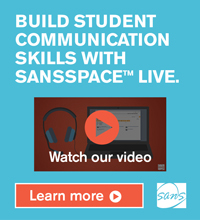
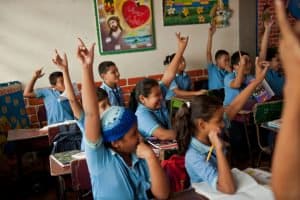 Volunteers not only help others but are often the beneficiaries of their ‘altruism’
Volunteers not only help others but are often the beneficiaries of their ‘altruism’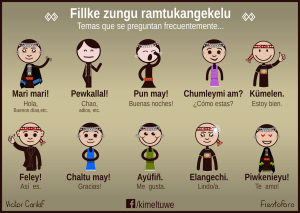 Mapuche schoolteacher Victor Carilaf has teamed up with Chilean artist Fiestoforo to create Kimeltuwe, a collective that has released sets of emojis to represent indigenous peoples of Latin America. Part of the project promotes the Mapudungun language—an indigenous language spoken by the Mapuche people in Chile and Argentina. Part of the project is depicting local languages, with descriptions of emotions like kümelekan for “I am well,” küpa umawün for “I am tired,” and kutrankülen for “I am sick,” among many others. Right now, the emojis can be used as images or stickers that can be shared in texting, comments, or messaging, and Kimeltuwe is looking toward news ways to integrate the emojis into different messaging platforms.
Mapuche schoolteacher Victor Carilaf has teamed up with Chilean artist Fiestoforo to create Kimeltuwe, a collective that has released sets of emojis to represent indigenous peoples of Latin America. Part of the project promotes the Mapudungun language—an indigenous language spoken by the Mapuche people in Chile and Argentina. Part of the project is depicting local languages, with descriptions of emotions like kümelekan for “I am well,” küpa umawün for “I am tired,” and kutrankülen for “I am sick,” among many others. Right now, the emojis can be used as images or stickers that can be shared in texting, comments, or messaging, and Kimeltuwe is looking toward news ways to integrate the emojis into different messaging platforms. The U.S. Department of Education has also awarded more than $71 million in new and non-competing continuation grants to help strengthen the capacity and performance of American education in world languages, cultural understanding, area and international studies, and research. The grants are under the Fulbright-Hays Act, also known as the Mutual Educational and Cultural Exchange Act of 1961, and Title VI of the Higher Education Act of 1965, as amended. Both grant programs are administered by International and Foreign Language Education in the Office of Postsecondary Education.
The U.S. Department of Education has also awarded more than $71 million in new and non-competing continuation grants to help strengthen the capacity and performance of American education in world languages, cultural understanding, area and international studies, and research. The grants are under the Fulbright-Hays Act, also known as the Mutual Educational and Cultural Exchange Act of 1961, and Title VI of the Higher Education Act of 1965, as amended. Both grant programs are administered by International and Foreign Language Education in the Office of Postsecondary Education. In Santa Fe, New Mexico on October 26-27, 2017, the Indigenous Language Institute is holding it’s 8th annual symposium. The theme of the 8th Annual ILI Symposium 2017 will address the importance of comprehensible input and active listening of the target language for oral language development to create speakers.
In Santa Fe, New Mexico on October 26-27, 2017, the Indigenous Language Institute is holding it’s 8th annual symposium. The theme of the 8th Annual ILI Symposium 2017 will address the importance of comprehensible input and active listening of the target language for oral language development to create speakers.


 National Adult Education and Family Literacy Week was celebrated September 24-30, 2017.
National Adult Education and Family Literacy Week was celebrated September 24-30, 2017. 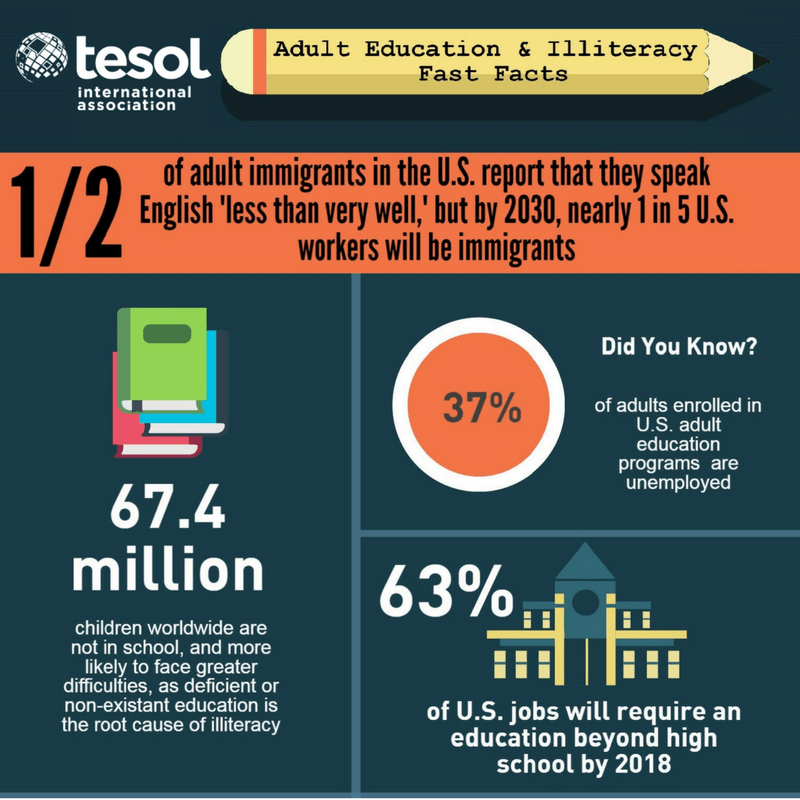
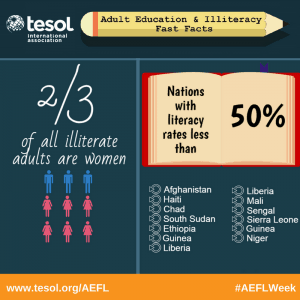
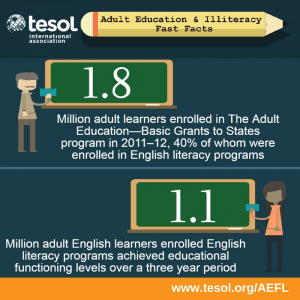
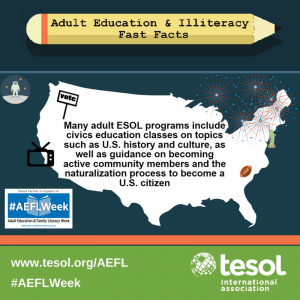
 The
The